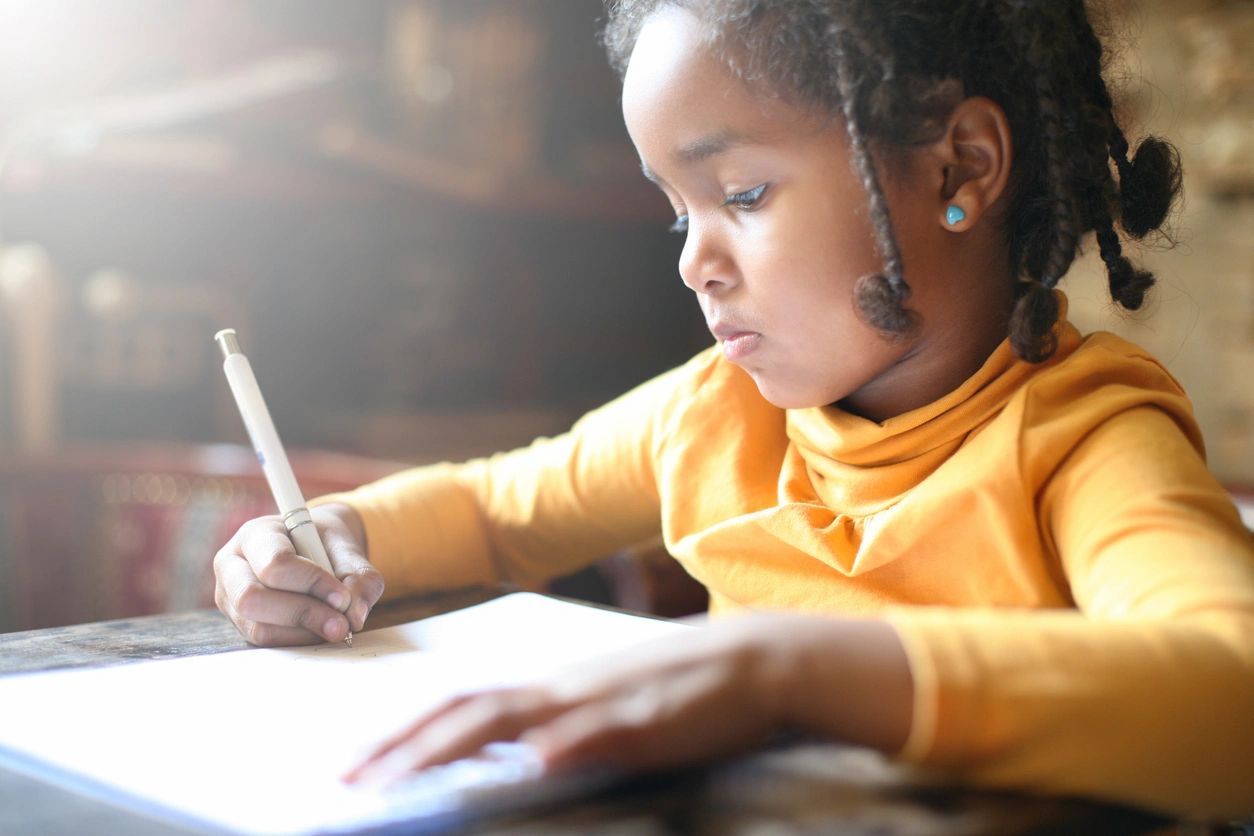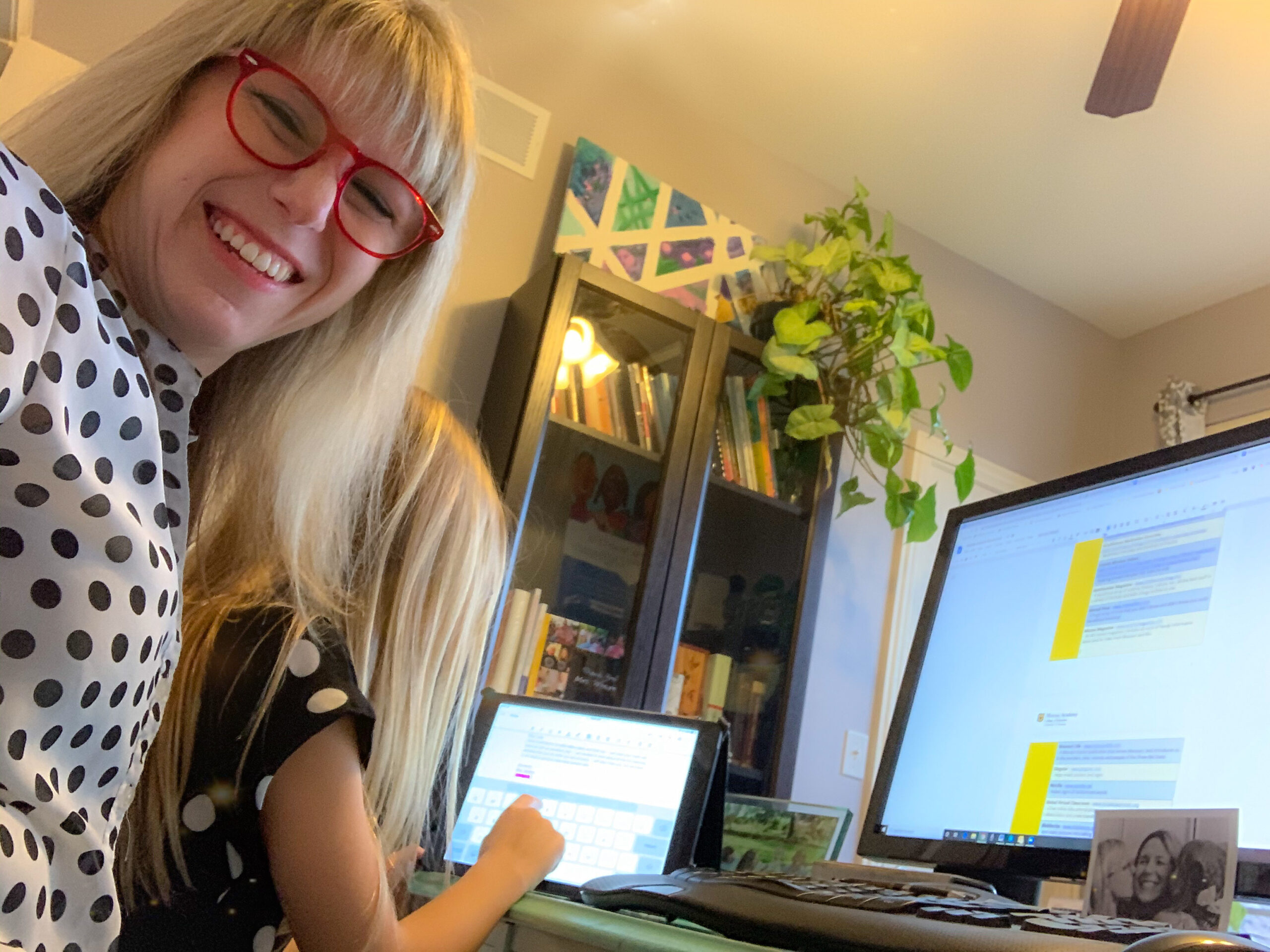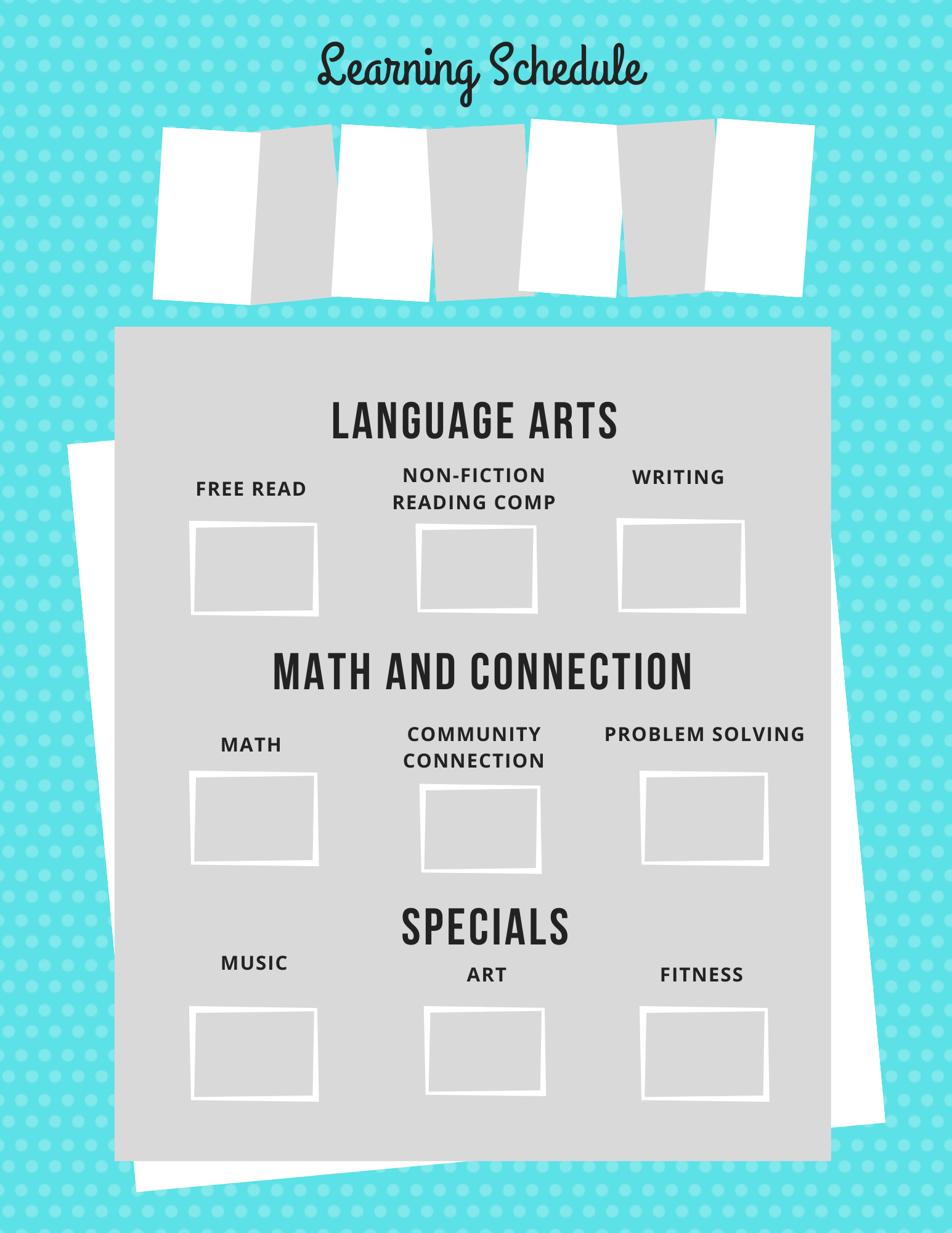Twenty-seven rambunctious six-year-olds clamored into the classroom asking questions in Portuguese and English. They were generous with their hugs and excited to be part of a new international elementary program. It was February 2020, and my colleagues and I were in Santos, São Paulo, helping the Grade 1 team navigate new K-5 materials in our Learning Management System. After working with the technology, we spent time with the students — coloring, writing, talking, and laughing together.
Classroom visits such as these are among my greatest joys as the Academic Director of a global school district. A short-time after this visit, our partner schools across the globe closed due to COVID, and our blended programs became fully online programs. The February 2020 launch of our elementary program has taught me important lessons about working with K-5 students and teachers in these online contexts. Below are the top five takeaways I am focusing on as we support elementary schools in preparing online options for the coming school year.
Teachers Matter.
Dr. C is a performer and singer. She views the online platform as a new stage for her important pedagogy. Lately she has been sharing photos of her covered in number stickers, dancing with stuffed animals, and utilizing other performance surprises to keep her young learners engaged.
Mr. H. doesn’t like technology. He misses his classroom, misses workshopping with students at the kidney shaped table in the back of his room and he especially misses the energy when the students spill in from the hallway. While his students know that he misses seeing them face-to-face, they don’t know how he feels about teaching online. Each day Mr. H goes out of his way to be enthusiastic about learning in this new model.
What Mr. H and Dr. C share is a love of their students, a commitment to making this new approach work, and a love of teaching that still shines across the video conference screen. This passion translates directly to student learning and engagement outcomes. Studies have shown that teachers continue to be the single greatest predictor of achievement and connection. The ways educators demonstrate care and high-expectations matters more than any other characteristic in student success.
Ms. L is honest and vulnerable with students. She shares that she is also new to online learning and her vulnerability puts kids at ease. Ten minutes into a lesson, students feel like they are sitting criss cross applesauce on the floor. She sings phonics songs and eagerly asks her young scholars to contribute to the conversation.
Technology is a learnable tool.
After a lesson, Ms. L told some of us that she practices navigating the technical tools ahead of time with her son. The technical learning curve is real—it is also surmountable. In my experiences, young students often leap over this curve ahead of their teachers. Harness the technical skill set of young learners by asking for their ideas, and assigning students to technical support roles (e.g. much like the in-person “line leader” role).
Families are critical partners in the learning process.
Four months into our new program, one of our international partner schools shared that since moving online, the Grade 1 math classes had become a family event. Parents and grandparents were logging-in with their children to count, add, subtract, and manipulate numbers in English.
While this experience might not translate directly to the U.S. context, families continue to be essential learning partners in online elementary programs. We need to make sure they know how to access digital materials, help their children login for synchronous classes, and that they supervise appropriate online activity. Different children need this support to different degrees.
One of the greatest strengths of these new models is that they cause us to think differently about space, place, and community. As school learning shifts to living rooms and kitchen tables, new school conversations are happening at different times and between different family members. Further, students learn that classrooms are flexible constructions and that learning can happen anywhere.
The model requires flexibility and movement.
Utilize intentionality around the online schedule and build in purposeful movement breaks. Seven-year-olds weren’t made to sit in front of a computer (or iPad) screen from 7:30am-2:30pm each day. Students need kinesthetic breaks during online sessions and a full log-off every 45 minutes. Elementary learners, whether online or offline, are still elementary students, which means they need to wiggle, sing, and stretch.
As we develop online/ blended elementary classrooms, students need a combination of synchronous (online/real-time instruction) and asynchronous (off-line or anytime practice/instruction) strategies. Utilize different combinations of whole group, small group, and independent sessions to help students master concepts, learn skills, and practice new strategies. Use synchronous moments to build community, talk through class material, and directly teach new concepts.
Equity is essential in serving kids.
As we transition to more online learning options, we must advocate for equitable access. This requires creative community-based solutions.
How do we make sure all students have access to devices, reliable internet connections, and the materials needed to learn from home? How do we support families in partnering with children in these new models? How can we open up community spaces to create new kinds of classrooms? How do we run breakfast and lunch programs to students learning from home? How do we honor confidentiality and privacy during video conferences? How do we cultivate safe space in online settings? How do we expand choice to all families?
These are essential challenges to explore as we move to online models. In fact, if we aren’t problem-solving around these kinds of questions, we aren’t serving students. In this uncertain and unprecedented season in education, we must continue asking hard questions, implementing new solutions, and continuing to be vigilant in putting students first.
Like many in education, I am hopeful that we will emerge from this uncertain time with reimagined strategies and tools. I am also hopeful we will begin to envision new possibilities for teaching, learning, and community, and that we will use these lessons to better serve students and teachers.
Encouragingly, Dr. KFW



